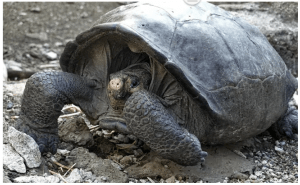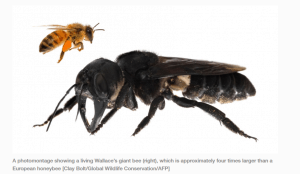A new report by the Intergovernmental Science-Policy Platform on Biodiversity and Ecosystem Services (IPBES) warns that we are well on our way to losing 25% or our plant and animal species and have already lost 47% of ecosystems.
Tag: Biodiversity
Good news in biodiversity

A giant tortoise from the Galapagos, from a species last seen in 1906, has been found. Chelonoidis phantasticus or the Fernandina Giant tortoise was found on Fernandina island and is believed to be a 100 years old female. It is hoped that other individuals of the species will also be found. Genetic testing remains to be done to confirm that it is indeed the same species. The Fernandina Giant tortoise is one of the 15 known species of giant tortoises in the Galapagos. Two of the species are already extinct, one of them being the species (Chelonoidis abingdonii or Pinta Island tortoise) to which Lonesome George, the islands’ most iconic giant tortoise, belonged.
Meanwhile,one the other side of the planet, the world’s largest bee has been spotted in January, for the first time in decades. Wallace’s giant bee, Megachile pluto, which is 4 times larger than the European honeybee, was last seen in the wild in 1981. Alfred Russell Wallace, who came up with the theory of evolution by natural selection around the same time as Darwin, discovered the bee in the 1850s when he lived in the Indonesian islands and made a living by sending back animal species to the UK.
The bee is known to be elusive and was thought to have gone extinct when it was last seen in 1981.

Valuing Biodiversity. The economic case for biodiversity conservation in the Maldives.
In the last decade or so the world’s coastal areas have received a lot of attention – attention that has been spurred on specifically by the Indian Ocean Tsunami in 2004. Subsequently, the undeniable linkages between coastal resources and economic and human wellbeing have become more apparent. This is evident nowhere more so than in the Maldives – a nation of small islands dependent entirely on its coastal and marine resources, which contribute extensively to its economy and its people’s livelihoods. There are few examples in the world where an entire nation’s wellbeing is so strongly linked to its natural resource base. For such a country, any threat to its biodiversity means adverse impacts on its future development. Clearly then, there is a strong imperative to recognise and demonstrate that there is an economic – in addition to a biological and ecological – rationale to biodiversity conservation.
Click here to read complete publication
